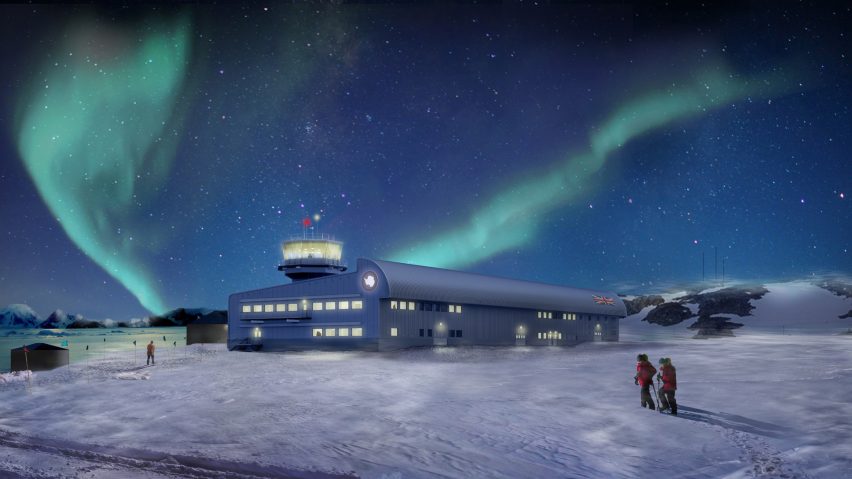Construction has begun on the Discovery Building for the British Antarctic Survey's research station in Antarctica, designed by Hugh Broughton Architects and Ramboll with NORR and Turner & Townsend.
The operations centre is being built at the Rothera Research Station on Adelaide Island, which is the base for British research in Antarctica and acts as the capital of the British Antarctic Territory.
It is being completed by a team made up of contractor BAM, architecture studios Hugh Broughton Architects and NORR, as well as engineering consultants Ramboll, Turner & Townsend and Sweco.
Called the Discovery Building, the facility will contain a wide range of functions within a single aerodynamic structure that will face into the prevailing wind. A wind deflector will be built along its roofline.
This deflector is designed to channel air over the building, creating higher speeds down the facade not facing the wind, which will minimise snow accumulation around the structure.
"It is the first time a snow and wind deflector has been used at this scale in Antarctica," said Hugh Broughton Architects.
The Discovery Building's mono pitch roof and walls will be made from composite insulated metal panels, which will be coloured pale blue. According to the architecture studio this colour is "inspired by the tones of the Antarctic sky" and also helps reduce the amount of damage to the structure from the Antarctic's high levels of UV.
The two storey facility will contain expedition preparation areas, storage space, a medical facility, offices, workshops and recreational spaces. It will also have a control tower, which will have 360-degree-views over the station and its landing strip.
Designed to be energy efficient, the building will meet a bespoke BREEAM accreditation that has been developed by Ramboll and the Building Research Establishment for Antarctica.
"This cutting-edge facility will support scientists who are investigating the impacts of climate change on our planet as we race to find solutions which will support our future," said Hugh Broughton, director of Hugh Broughton Architects.
"We are thrilled to be part of a dynamic team working with BAS to deliver the project, which will mark another important step in the development of the architecture of Antarctica."
The development is part of a 10 year plan to update the infrastructure and facilities at the Rothera Research Station called the Antarctic Infrastructure Modernisation (AIM) Programme to make the base more economic to run. The research station has been occupied since 1975 and operates year-round.
Hugh Broughton Architects has designed several buildings in Antarctica including a research centre for Spain and a mobile research facility for the British Antarctic Survey. It is also working with architecture studio Jasmax to redevelop New Zealand's Scott Base.
Project credits:
Client: British Antarctic Survey (BAS)
Technical advisers & developed design: Ramboll, Norr, Turner & Townsend
Main contractor: BAM
Delivery consultant: Sweco
Delivery architect: Hugh Broughton Architects

